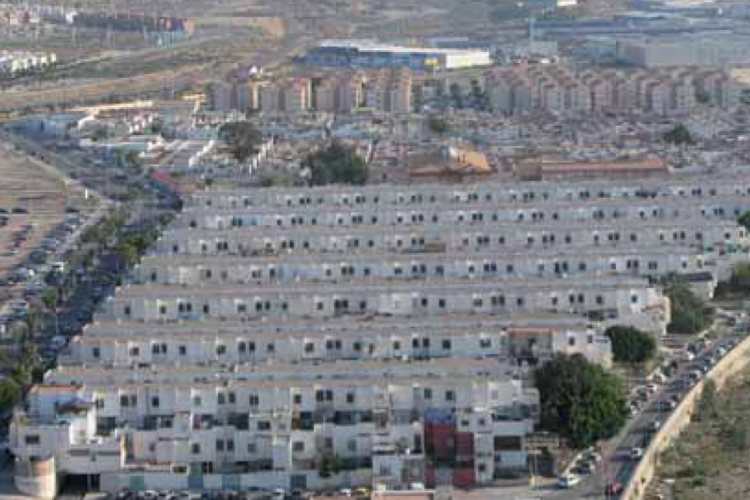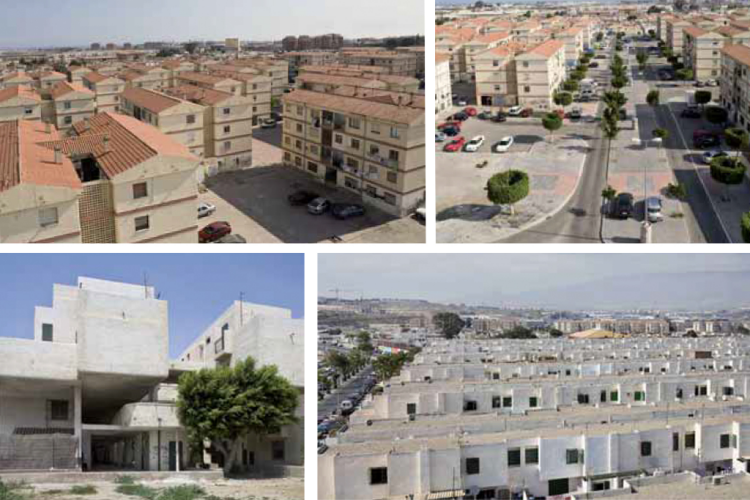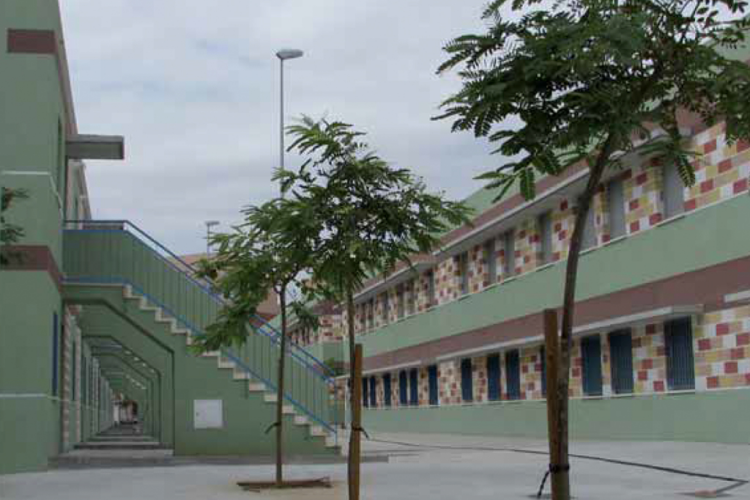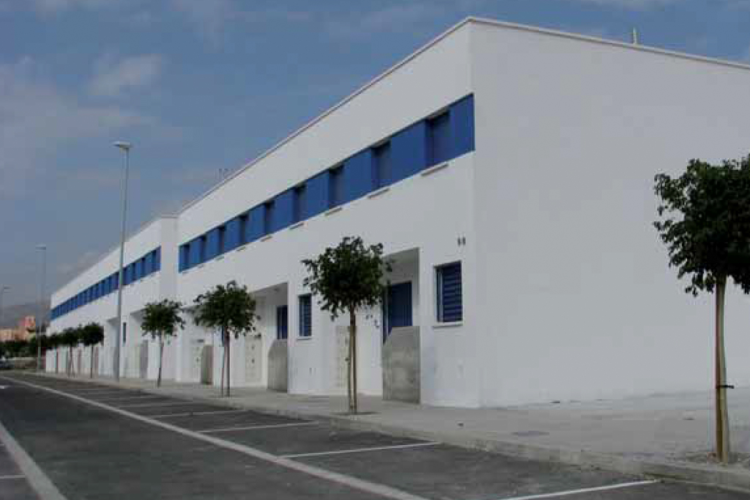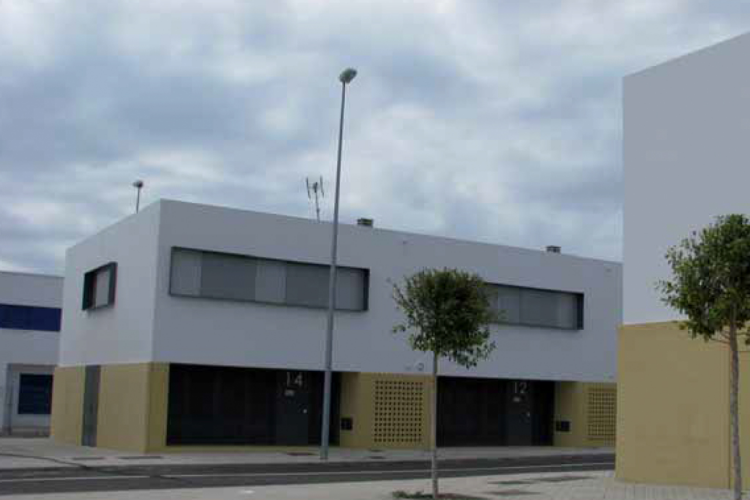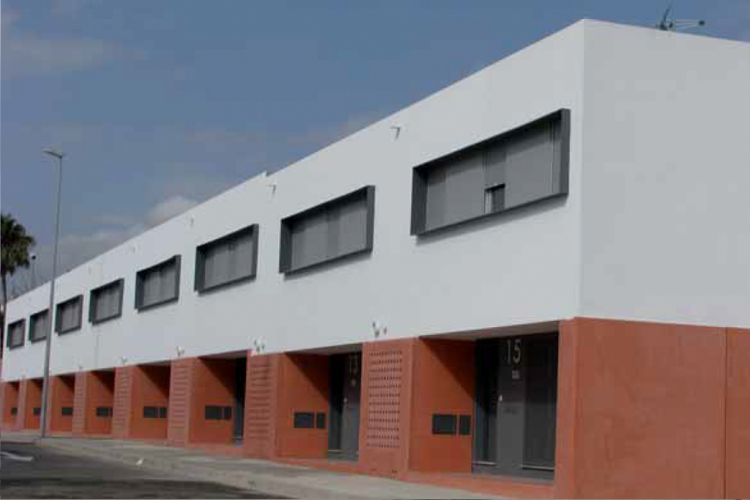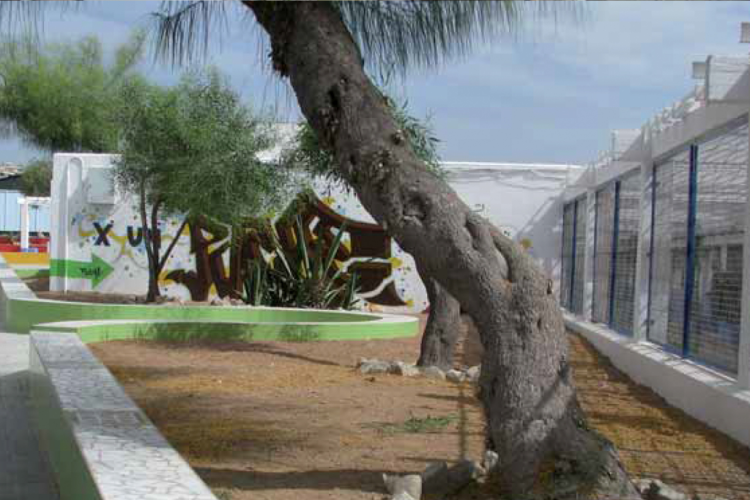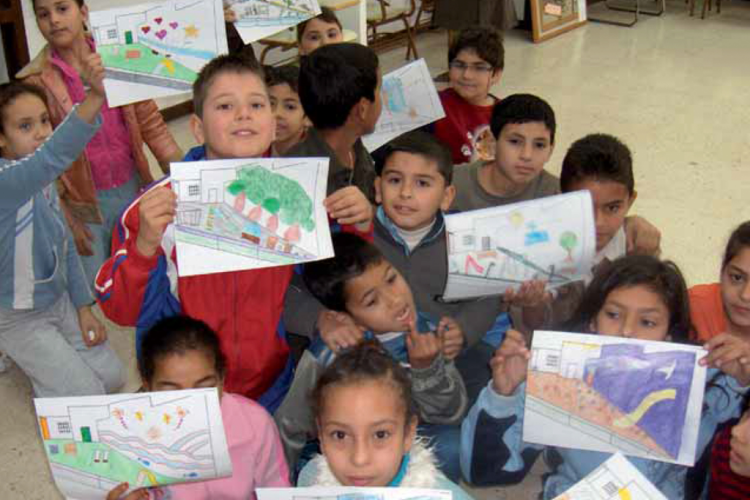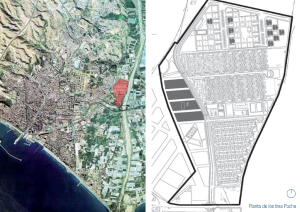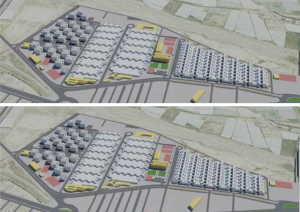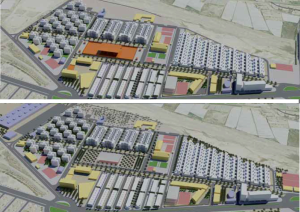Action program for the comprehensive rehabilitation of the District of El Puche, Almería
The neighborhood of El Puche was built between 1971 and 1982 by the defunct National Housing Institute. It was created to give temporary shelter to families who lost their homes as a result of torrential rains, in 1970, in the city of Almería. This interim solution first, eventually became final, despite the low quality of housing and neighborhood location, situated on the outskirts of Almería. The families who settled in El Puche came mostly from the poorest neighborhoods of the city: Barrio Alto, Amatisteros, Cuevas El Puche, Hoyo de las Tres Marias and Coheteros, Chamberí and Cuevas de San Joaquin, who were those who suffered the greatest damage caused by the storm and accounted for 453 houses and crumbling caves and being declared in ruin 2,118 houses and shacks. The Cabinet of General Franco, regardless of the needs of the population, approved February 23, 1970 the construction of 1,100 homes for those affected by the storm in the Cortijo Puche estate after payment of 20 million pesetas your purchase. Work began in El Puche Center in May 1971. 496 homes on one level with 55,28m 2 Floor, grouped in fours around a porch were built. In what was called The North Puche 500 homes spread over 32 blocks of four floors, with four apartments per floor were built. The housing 427 South El Puche were completed in 1980. They are of duplex type and are oriented, comb towards the Andarax river. Its location on the outskirts and isolation from Almería enhance the population's awareness regarding the city ghetto. The Puche, along with Los Almendros, La Fuentecita and to some extent still, La Chanca form a semicircle embracing the capital, constituting a peripheral belt of poverty and social exclusion. In total, El Puche has around 1,425 homes currently a third of them have a good condition and most of the rest are in a very poor state. At first the area was occupied by ordinary simple families, working people. Mismatches and problems between different family groups that lived in the neighborhood led to rapid deterioration of housing and El Puche became a slum and, sometimes, pretty harsh. Many of the families who settled in the Mapuche were changing residence being replaced, at first, by Roma families from different neighborhoods and, above all, Roma families and payas arrivals from other provinces. For several years we are witnessing in the neighborhood of the arrival of African immigrants, especially from Morocco. The existence of various cultures leads efforts of coexistence among neighbors that sometimes caused the rift between different cultural groups. People of El Puche working engaged in construction, trade-mainly ambulante- sale, domestic service and odd jobs in bars and restaurants, child care, and agriculture. The common feature of all these activities is flexibility, because there is, in any case, job security and people are subject to high labor mobility in precarious conditions without fixed or stable jobs. In 2004 the then Ministry of Public Works and Transport (Ministry of Housing and Planning) of the Andalusian entrusts the Public Land Company of Andalusia drafting an action plan for the district to collect proposals for the The urban integration in the city Puche and comprehensive rehabilitation ward. In the same year, EPSA creates an Office of Management in the Puche from which the actions to be taken in the neighborhood, actions that come included in an action program for the neighborhood to collect proposals for urban integration are specified in El Puche City and comprehensive rehabilitation ward. In the same year, EPSA creates an Office of Management in El Puche from which the actions to be taken in the neighborhood, actions are included in a program called "Action Programme for the comprehensive rehabilitation of the district are specified El Puche ". Since the action program, in addition to measures of housing and urban development, other necessary for the recovery of the neighborhood from a socioeconomic point of view, includes working through tables of participation (employment, housing, education, etc. ) where neighbors and the various ministries of the Government of Andalusia, which were already in the neighborhood since the mid-90s, and other newly introduced are represented. The participation of the City of Almería is a key element in the development of the actions envisaged in the neighborhood and the key to their subsequent maintenance.
Modalidad Integrated operations
Uso
Dirección
El Puche
Almería
Almería
- EPSA- Empresa Pública de Suelo de Andalucía


